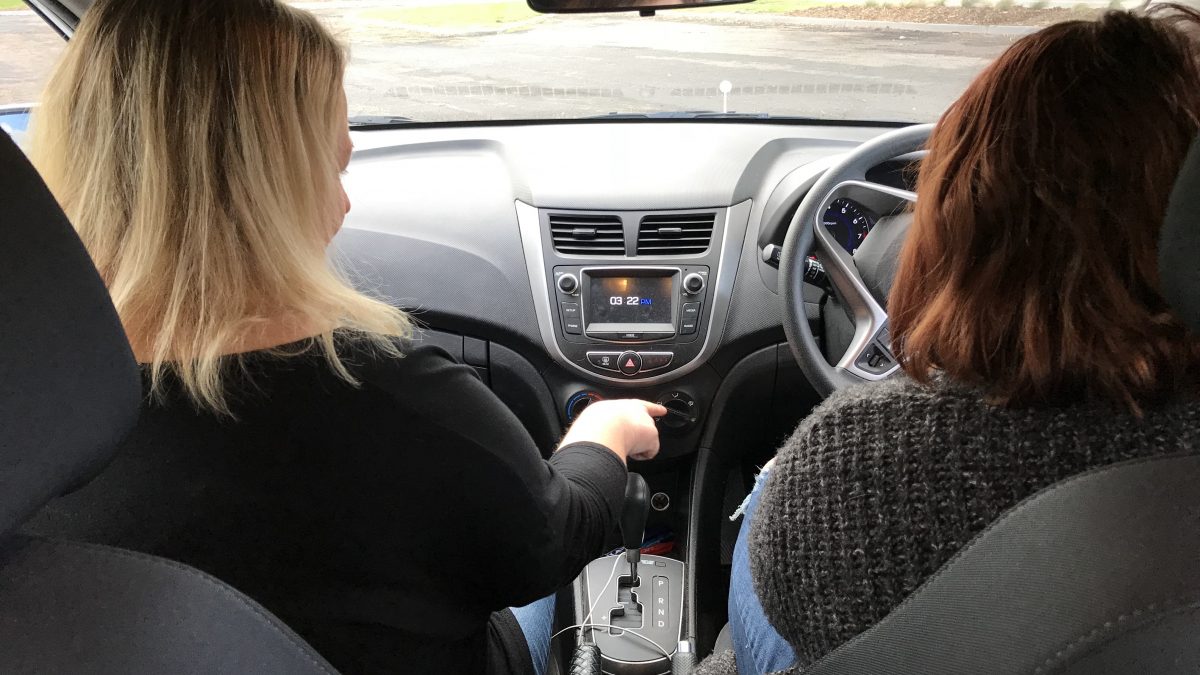How can I start teaching my child to drive?

Is anxiety stopping you from driving?
October 11, 2018
How do I support my learner this Summer?
November 30, 2018
Start with the basics
We want to support our next generation to be forward-thinking, confident young adults, don’t we? We want them to be able to stand up in this world and stand on their own two feet. Not raise children that can’t pay a bill, budget, or cook a meal without our help. We also send them off to school for a minimum of 13 years to ensure they have the greatest start of all in life – and do it willingly. My parents wouldn’t help me through fear, so it was a friend a couple of years older and about a dozen driving lessons. Thankfully, this generation of parents are more in tune with their children and are willing to help them gain that independence, no matter what direction that may be. So, the question is, how can I start teaching my child to drive?
120 hours seems A LOT.
The reality is 120 hours is mandatory for young people under the age of 21, which I believe is the right way to help make our young adults safer on our roads. That works out to be just one hour and twenty minutes per week. I know what you’re saying. I don’t have the time as we’re always rushing from A to B or, I’m scared they’ll crash the car or, with their brothers and sisters in the car they’ll be too distracted. Yes, time can a factor and yes, siblings can be a major distraction, but like I said, an hour of your time in the early days each week or, just 15 minutes each day 3 or 4 times a week is nominal. And, with daylight savings, the days are now longer!
How do I start teaching my child to drive?
The first step is to drive them to a quiet area, particularly with a fairly long straight road, if you can. Once you’ve reached your chosen spot, change drivers, and go through the below checklist to get started. Start with:
- Show them the cockpit of the car and what everything does.
- Get them to adjust their seat according to their height. Too far back will make reaching the pedals difficult and too close will have their knees hitting the car dashboard. This would include the incline of the back of the seat. Too far back and they’ll lean forward and end up with a sore back.
- Make sure you’ve shown them which pedal is which. Just because they’ve been in the car with you for years, doesn’t mean they can’t mix up the brake and accelerator.
- Before you’ve even started the car, get them to pivot between pedals without lifting their heel off the floor.
- Once they’ve started the car, get them to practice using the brake and accelerator lightly to just get the car moving (say up to 20 kilometres per hour). Ensure you explain how sensitive or heavy the pedals are of your car because as we know, all cars are different.
- Once, they’ve got these two actions rather comfortable, encourage them to speed up slowly.
What happens next?
Be consistent with the above dot points. These are the absolute basics to get them at least sitting in the car and moving it at a slow pace. It’s a great way to show them you care enough to also show them how a car works. It’s important to explain the why, not just the how. Also, don’t expect them to use mirrors or be too aware of what’s happening around them. That’s your job in the early days. Learning to control a vehicle and be aware of what’s happening around them for the first few hours can be a great confidence boost.
Another great tip is once they’ve started driving, ensure they still have a look at their road to solo driving book. I know myself, whenever I’m learning something new, being able to combine the theory and practical together, helps it make better sense.
What happens if our anxiety gets in the way?
You know what? It doesn’t matter. Learning to drive is a journey and it may take time. Anxiety, fear, lack of confidence is all something we’ve experienced in our lives, and learning to drive is another hurdle we all overcame. If anxiety does get in the way, it most definitely should not be dismissed or told you’ll be right. Supporting our young adults is what we do as parents and yep, we don’t always get it right, we didn’t get a manual at the maternity ward, but we did get support from our doctors and midwives. So what should we do to help get that anxiety under control? Reach out for help!
Want to know more?
Got any further questions, please do not hesitate to contact me. Whether it be to help with being a supervising driver, wanting a senior’s loved one to be assessed on continuing to drive, had an accident, and now suffer from anxiety, received NDIS funding for a loved one, all of these I can help you with. At Drive Skills 4 Life, we’re not just another driving school. Want to be able to take advantage of a free government funding driving lesson? Go to www.keys2drive.com.au, register your learner’s details, send me the 8 digit code, and ring me on 0422 765 843 to lock in a date and time.
Until next time, Sarah



